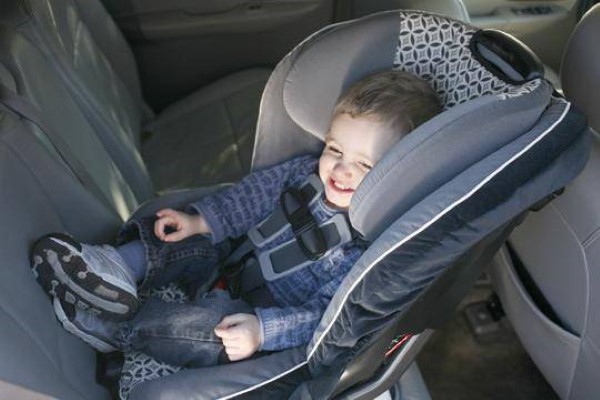Car seat safety can be overwhelming. There are so many questions to be answered. Is the car seat installed correctly? Are the straps snug enough to secure my child? When is it time to change into a different size car seat? It goes without saying, but always refer to your specific car seat manufacturer’s instructions (check height and weight limits) and to learn how to install the car seat using the seat belt or lower anchors (LATCH) and a tether, if available.
In the meantime, here are some safety tips you (and anyone driving your kid around) should know:
What Every Caregiver Needs to Know about Car Seat Safety
1. Not all car seats fit in every make and model of cars.
Make sure the car seat you select works in your car. Some stores will let you test before you buy. And if you purchase online, be sure to check the return policies.
2. Be very careful about buying used car seats or accepting a hand-me-down.
If you must buy used or accept a hand-me down carseat, I recommend only buying or taking one from an individual that you know and trust. There are a lot of factors that contribute to a safe car seat for your child and you want to be sure that the car seat has not been compromised in any way and that it is not on the recall list.
3. Keep your child in the back seat until the age of 13.
4. Never install a rear facing car seat in the front seat with an airbag.
What Every Caregiver Needs to Know about Infant Seat Safety
This is typically the car seat that your new baby will ride home from the hospital in. Many infant seats attach directly to your stroller or can be easily carried around. It attaches to a base that is latched into your car, so the seat can easily be taken in and out without waking a sleeping baby.
5. Infant seats should always be rear facing and the longer infants and babies stay rear facing, the better.
The average age to transition your child from a rear-facing infant seat into a rear-facing convertible/toddler seat is approximately two years, but it is really based on weight and height so you should familiarize yourself with your car seat’s specific maximum weight/height guidelines.
What Every Caregiver Needs to Know about Rear-Facing Convertible Seat
These types of seats accommodate larger babies/toddlers, but are not as convenient as infant seats because they are not portable. They are generally heavy and have to be installed directly into the car, as opposed to clicking in and out of a base.
These seats are versatile, however, because it allows for your child to remain rear-facing when they are younger and then “converts” to a forward-facing seat as they grow older.
6. According to all the experts and the American Academy of Pediatrics, rear-facing is the safest option for kids, even if their legs are kicking the back seat.
I know first-hand how hard it is to keep your growing toddler in a rear-facing seat, but the back of the car seat shell protects and supports the head, neck and spinal cord in a frontal collision which is the highest percentage of crashes. Once they reach the maximum weight and height limits for rear-facing, you can use the same seat…just follow the guidelines for forward-facing installation of your particular seat.
What Every Caregiver Needs to Know about Booster Seats
It may seem way off in the distance, but eventually your little one will start maturing and growing into a booster seat. This type of car seat does not require any “installation.” The booster seat helps boost up your child to fit properly in the adult size seat belt.
7. It’s best to wait until your child outgrows their 5-point harness car seat and is mature enough to ride without a harness.
The child must stay seated for the entire ride without trying to unbuckle or tuck the shoulder strap under the arm. If they are a wiggle worm, you may want to consider purchasing a 5 point harness car seat that accommodates their height and weight.
At Tot Squad we have a combined 100+ years of child safety experience and bring that expertise to every family we reach. Tot Squad’s team of certified Child Passenger Safety Technicians (CPSTs) can perform a virtual car seat check easily and conveniently at your home, or you can read on for peace of mind.











